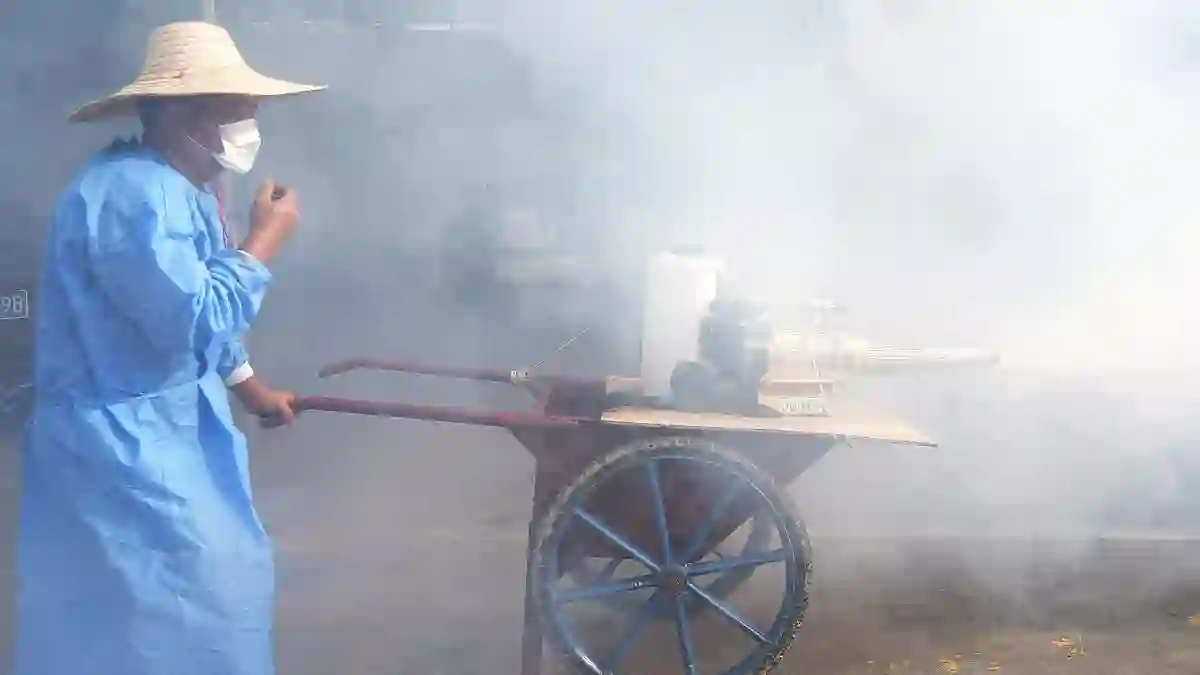Just as the world is finally settling into post-pandemic normalcy, another health scare is beginning to raise eyebrows across the globe.
A mosquito-borne virus that’s tearing through southern China has now spread beyond its borders—and experts are growing concerned it could reach the U.S. next.
Taiwan Reports Its First Case as Outbreak Grows
Taiwan confirmed its first case of chikungunya, a viral illness spread by mosquitoes, in a woman who had recently returned from Foshan, the outbreak’s epicenter in China’s Guangdong Province.
She arrived back on July 30, and health officials wasted no time in identifying the infection.
Twelve other cities in Guangdong have already reported infections.
Around 3,000 new cases were confirmed in just the last week alone, pushing China’s total to over 10,000 infections so far.
U.S. Issues Travel Warning as Experts Sound the Alarm
In response to the growing outbreak, the U.S. Centers for Disease Control and Prevention (CDC) issued a Level 2 travel advisory for Guangdong, warning Americans to take extra precautions if visiting the region.
But some health experts believe the virus might already be in the United States. Dr. Louisa Messenger, a mosquito specialist in Nevada, told Daily Mail: “This virus is just one flight away from being here.”
What Is Chikungunya and Why It Matters
Chikungunya is spread by Aedes mosquitoes—the same species responsible for dengue and Zika outbreaks.
While not usually fatal, it can bring on intense symptoms: fever, joint pain, and in rare cases, dangerous complications affecting the brain and heart.
The virus has a long and troubling history. One of the worst outbreaks was in 2004–2005, when it infected nearly half a million people across Africa, Asia, and the Americas.
This Year’s Outbreak Is Already Breaking Records
The outbreak in China is now being called the largest on record, according to virus monitoring experts in the UK. But China isn’t alone.
Since early 2025, outbreaks have hit the Indian Ocean islands of La Réunion, Mayotte, and Mauritius, as well as Madagascar, Somalia, Kenya, and India.
The virus is also gaining ground in Europe, and Pacific nations like Samoa, Tonga, Fiji, and French Polynesia are reporting rising numbers.
As of early August, over 240,000 cases and 90 deaths have been reported across 16 countries.
Could the Virus Already Be in the United States?
So far in 2025, the CDC has logged 46 cases of chikungunya in the U.S.—all in people who recently traveled to high-risk countries.
While none of those cases have resulted in death, it remains unclear how many might be tied to the ongoing outbreak in China.
Given that approximately 1.6 million travelers go back and forth between the U.S. and China each year, it may only take one infected traveler and one mosquito bite to spark transmission on American soil.
A Look Back at America’s Brush With the Virus
The U.S. has dealt with chikungunya before, albeit on a smaller scale.
In 2014, there were nearly 2,800 reported cases, including 12 that were acquired locally in Florida and Texas.
That year remains the worst on record for the virus in the U.S.
Between 2006 and 2013, the country recorded about 30 travel-related cases per year.
But the numbers spiked in 2024, when roughly 200 travel-linked cases were logged. Again, no deaths occurred, but the trend is troubling.
Health Officials Urge Prevention and Precaution
The CDC has ramped up its warnings, urging Americans to take protective measures if traveling to affected regions.
That includes wearing insect repellent, dressing in long-sleeved clothing, and staying in air-conditioned or screened-off areas to avoid mosquito bites.
Travelers returning from hotspots are advised to seek medical attention if they experience symptoms like fever, rashes, or joint pain.
China’s Response Echoes COVID-Era Measures
To contain the outbreak, Chinese authorities have reintroduced quarantine measures for travelers coming from Foshan—though these have recently been lifted.
Infected patients are being isolated in hospitals and kept under mosquito nets, with mandatory stays of up to a week or until they test negative.
City workers are spraying disinfectants around homes, streets, and construction areas to kill off mosquitoes.
Drones are also being deployed to identify and treat breeding grounds, while residents have been ordered to drain any standing water from pots, bottles, and containers.
Those who ignore the rules could face fines of up to $1,400 or even electricity shutoffs, according to state media reports.
Who Is Most at Risk?
While most people recover from chikungunya within a couple of weeks, some symptoms—especially joint pain—can linger for months or even years.
Those most at risk include newborns, the elderly, and anyone with pre-existing health issues like heart conditions.
Some studies have even linked post-viral inflammation from chikungunya to long-term health problems like high blood pressure and Type 2 diabetes.
No Cure, But Symptoms Can Be Managed
There’s currently no antiviral treatment for chikungunya.
Doctors recommend rest, plenty of fluids, and over-the-counter pain relievers like acetaminophen to manage discomfort.
The good news? The virus doesn’t spread from person to person. It needs a mosquito carrier to jump from one person to the next.
However, pregnant women should be especially cautious.
If infected close to delivery, they can transmit the virus to their baby during childbirth—sometimes resulting in serious neonatal illness.
